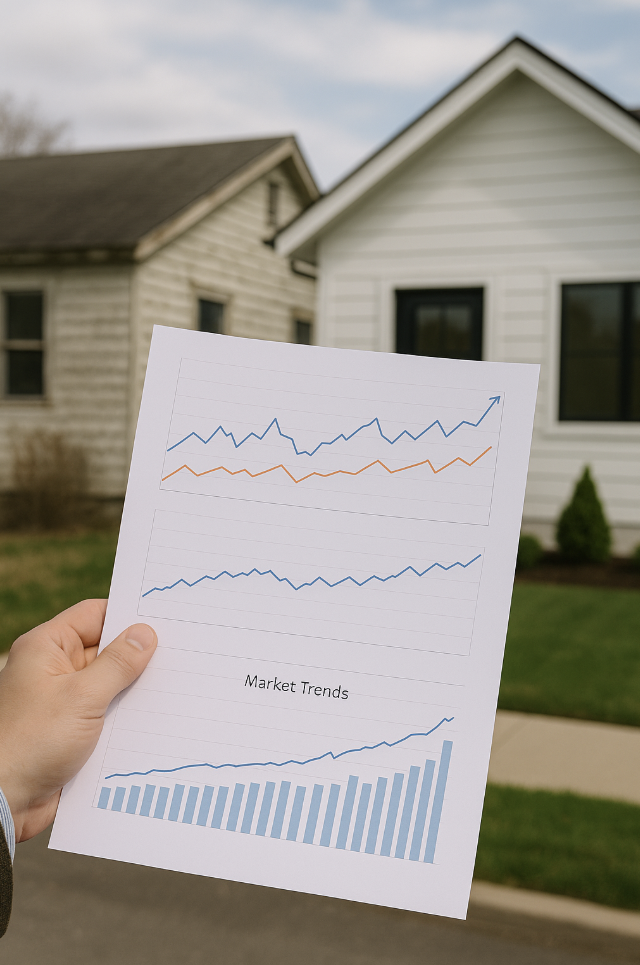Is Flipping Houses Still Profitable in 2025? Market Trends You Need to Know
Flipping houses in 2025 presents a set of unique challenges and opportunities. As we venture deeper into the decade, the real estate market continues to evolve under the influence of economic changes, technology advancements, and consumer preferences. This article explores the current landscape for real estate investors, particularly those interested in flipping houses, and details the pivotal market trends and considerations crucial for making informed investment decisions.
Understanding the 2025 Real Estate Market
The real estate market in 2025 is markedly different from the landscape a decade ago. Several factors, including shifting economic conditions and demographic shifts, heavily influence market dynamics. Interest rates, which have seen fluctuations in recent years, play a critical role in determining the affordability of property financing. Additionally, as millennials and Generation Z become predominant buyers in the market, their preferences significantly shape housing trends and demands.
Key Market Trends Impacting House Flipping
To grasp whether flipping houses remains a lucrative endeavor in 2025, one must understand the underlying market trends:
1. Technological Advancements in Property Renovation
Technological innovations have streamlined many aspects of house flipping, from renovation to marketing. With virtual reality (VR) and augmented reality (AR), investors can now present potential buyers with immersive property walkthroughs even before renovations are complete. Additionally, sophisticated project management software has optimized the renovation process, potentially reducing timescales and costs.
2. The Rise of Eco-Conscious Buyers
Eco-consciousness is a growing trend among today’s property buyers. Investors flipping houses in 2025 are finding that homes with green features—such as energy-efficient appliances, solar panels, and sustainable materials—are increasingly in demand. Properties that cater to this eco-friendly preference often sell quicker and at a premium, making them attractive flipping options.
3. Market Saturation and Competition
While the market for flipped homes continues to be robust in some regions, other areas are experiencing saturation. Increased competition can lead to longer selling times and reduced profit margins. Successful flippers in 2025 are those who conduct thorough market research to identify areas with high demand but low supply of modernized or turn-key homes.
4. Regulatory Environment
Understanding and complying with local building codes and regulations is more crucial than ever. Many regions have tightened regulations around property renovations, especially those involving historical or character homes. Flippers need to stay informed about these regulations to avoid costly delays or legal issues.
Is Flipping Houses Still Profitable?
The profitability of flipping houses in 2025 hinges largely on adaptability and strategic planning. Those who understand market dynamics and can leverage technological tools to enhance efficiency are likely to find considerable success. However, entering the flipping market requires an initial capital outlay that is not insignificant, alongside a readiness to navigate the complexities of property renovation and sales.
For perspective, involvement in the early stages of planning and a good eye for properties with potential are key. Also, establishing a reliable network of contractors, real estate agents, and legal advisors can significantly influence the achievement of profitable outcomes.
Strategies for Successful House Flipping in 2025
For those considering diving into house flipping, here are several tactics to enhance your chances of success:
- Market Research: Dedicate time to study local markets thoroughly. Understand the types of properties in demand and the demographics of potential buyers.
- Financial Planning: Accurately estimate all costs, including purchase, renovation, holding, and selling costs. Remember to include a buffer for unforeseen expenses.
- Focus on Value-Adding Features: Prioritize renovations that add the most value. In many cases, focusing on kitchens and bathrooms yields the best ROI.
- Sustainability Practices: Incorporate sustainable features that are becoming more significant to buyers. This can not only help sell the house faster but possibly at a higher price.
- Networking: Build relationships with professionals in the real estate industry. This network can provide valuable insights and support.
Conclusion
While flipping houses in 2025 remains profitable, it requires careful consideration of market trends, a strategic approach to renovations, and a solid understanding of financial and regulatory landscapes. By remaining informed and adaptable, investors can navigate this dynamic field and capitalize on the opportunities it presents. Investing in real estate through house flipping is not without its risks, but with the right approach, it can still be a rewarding venture.







